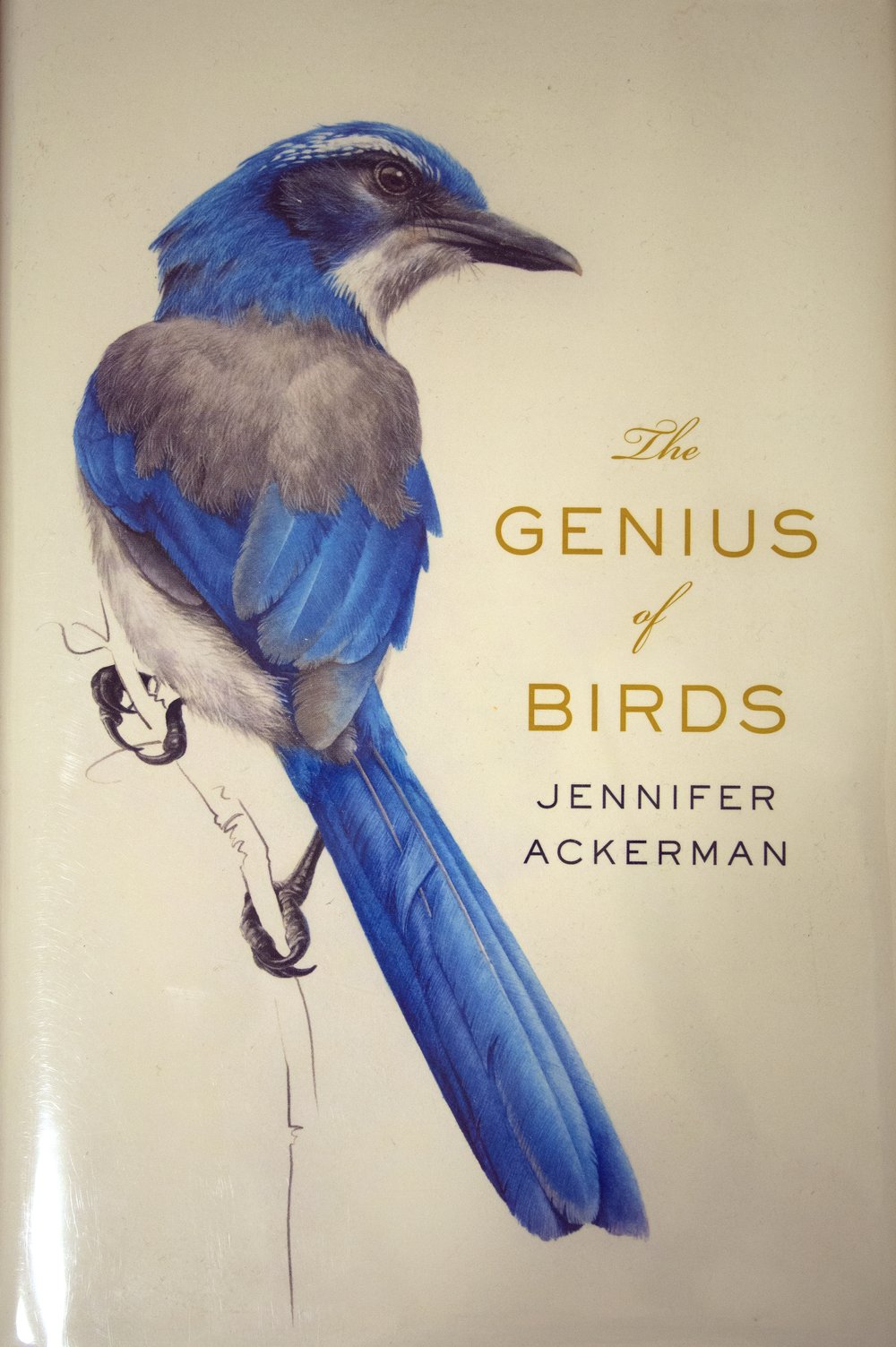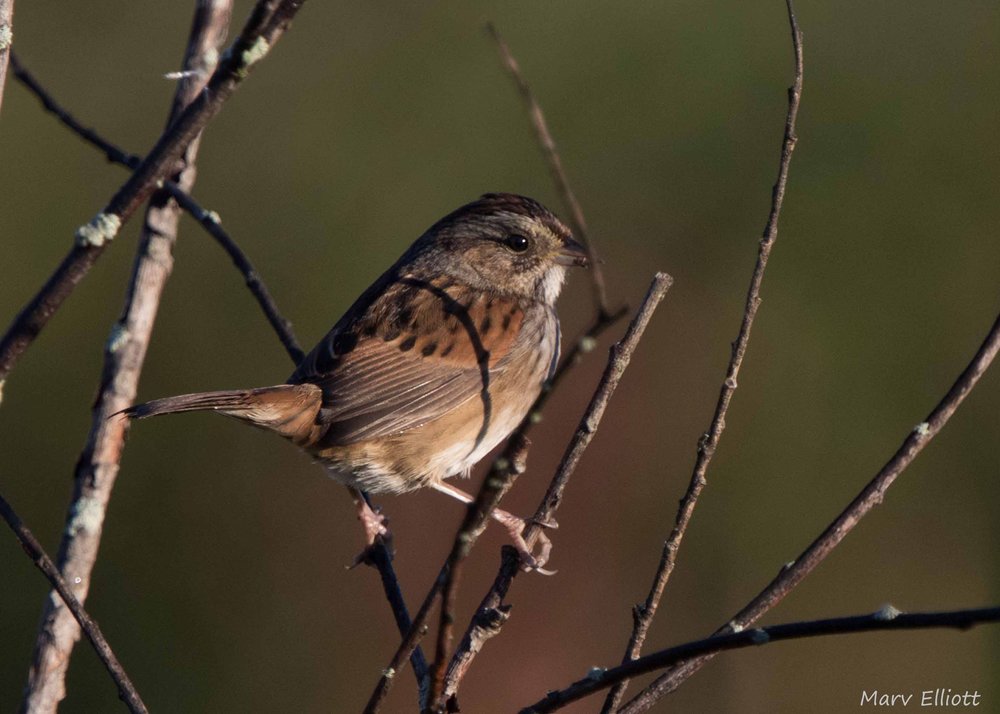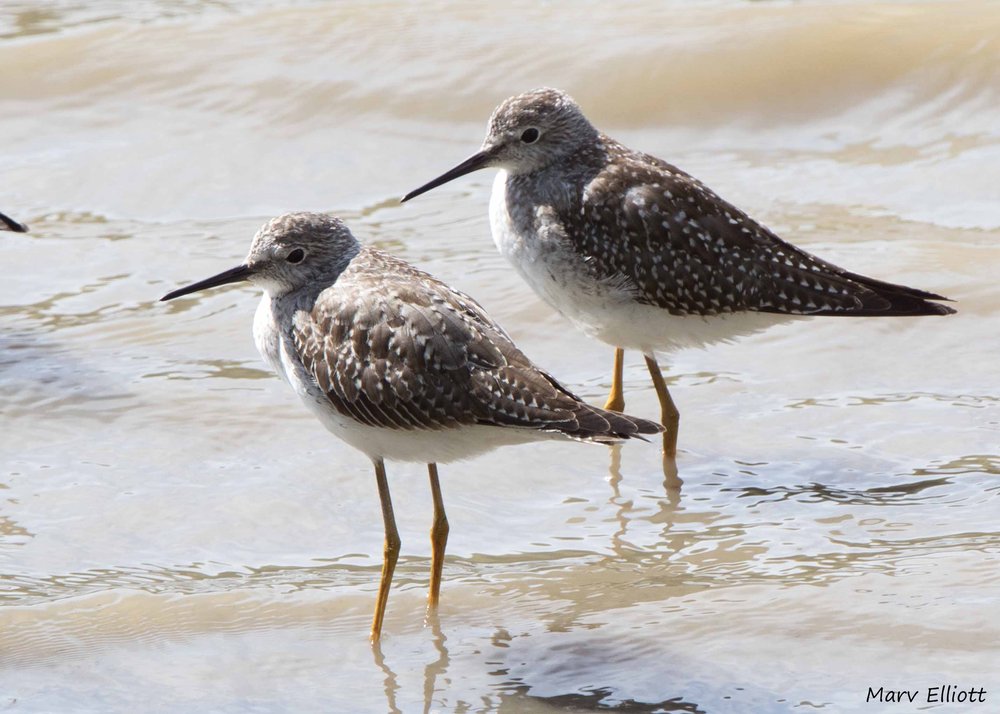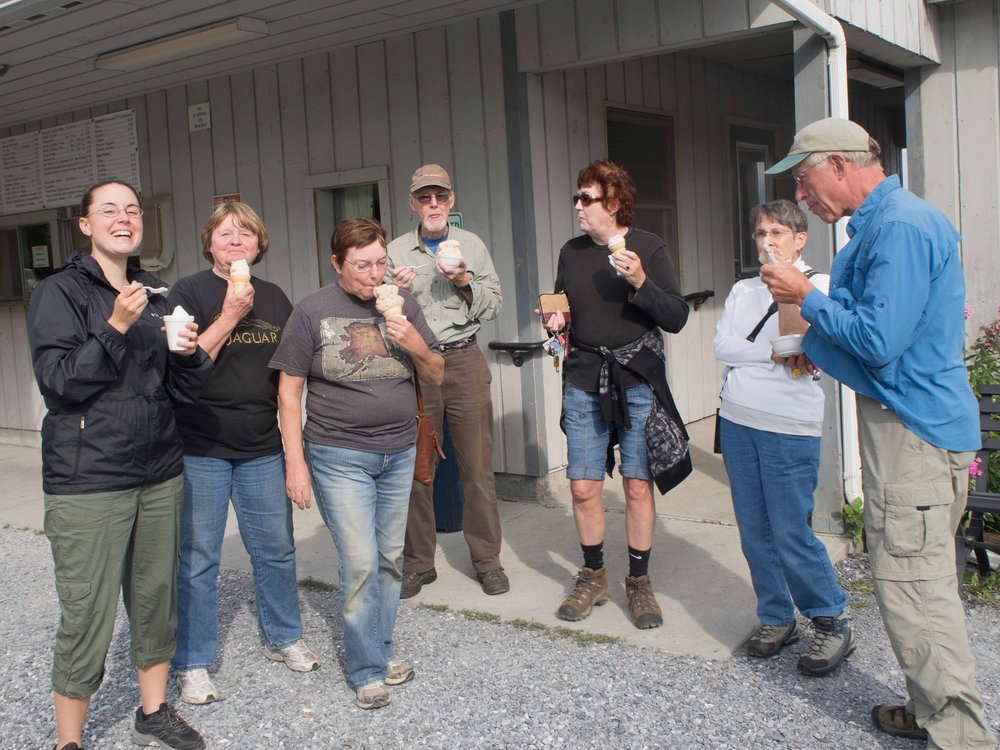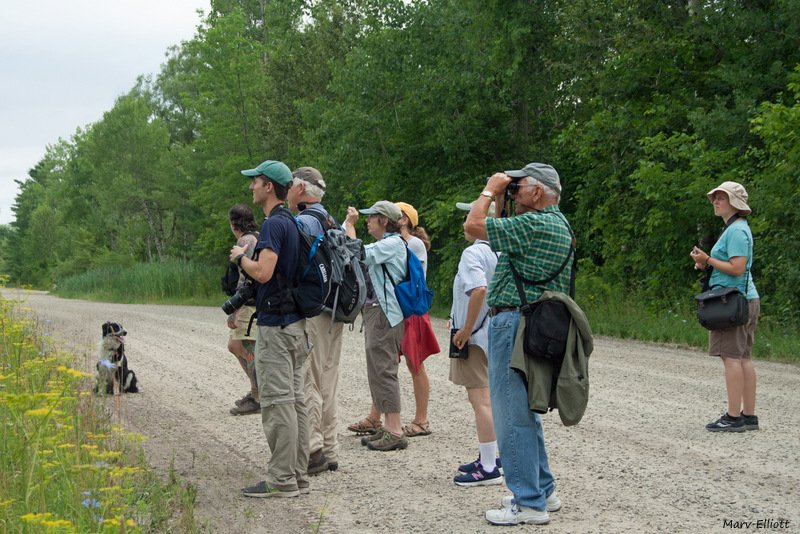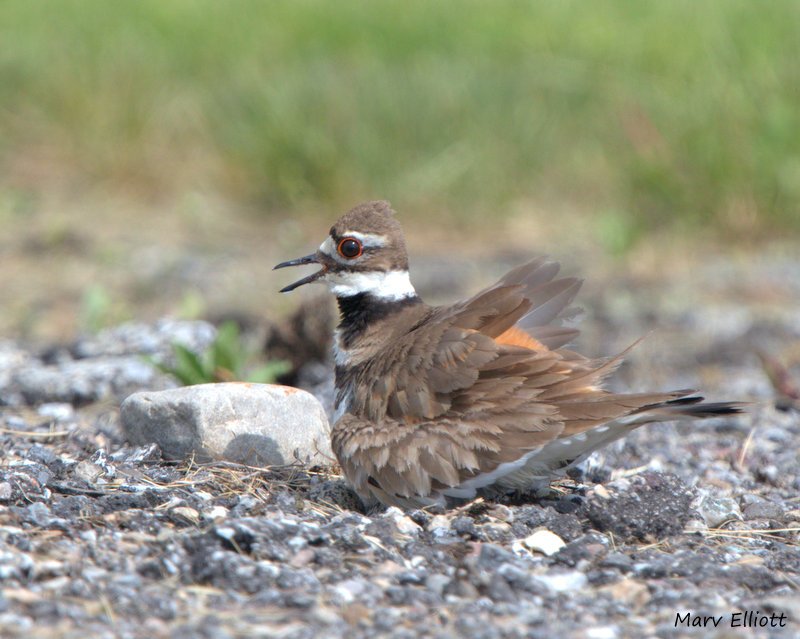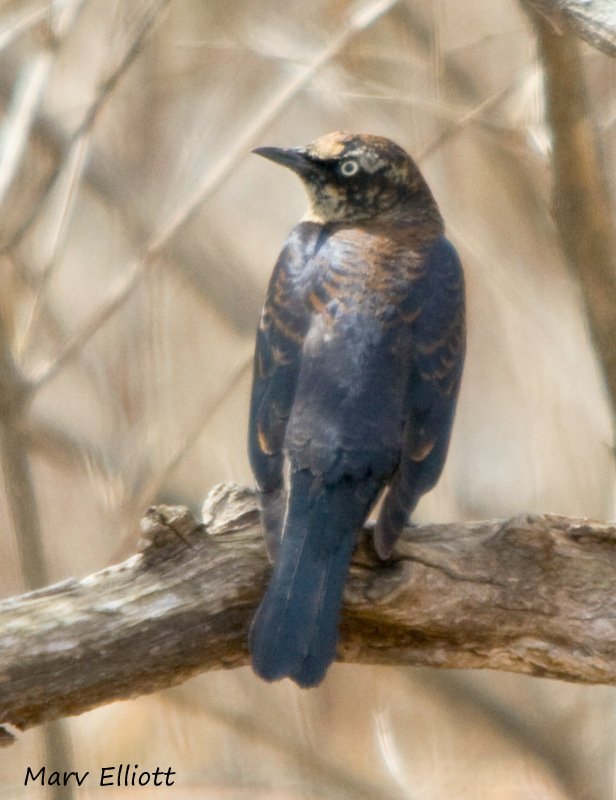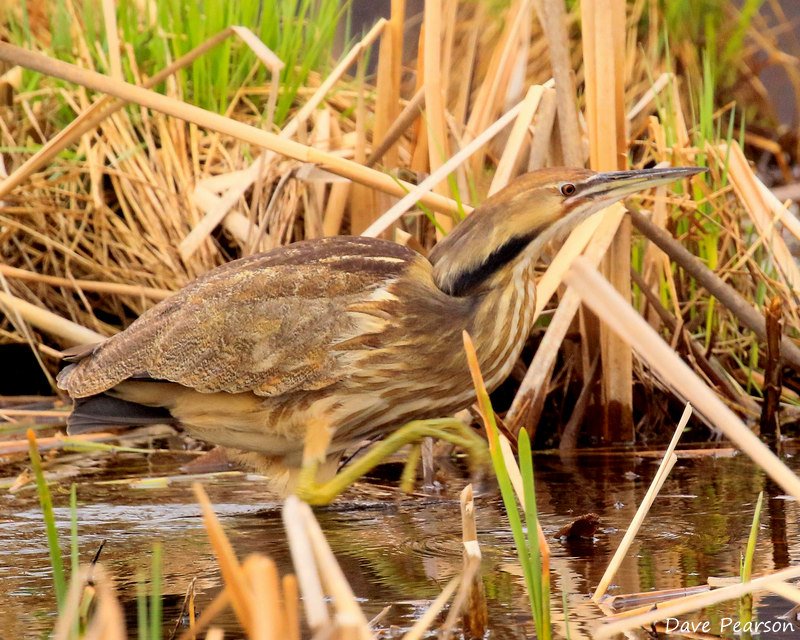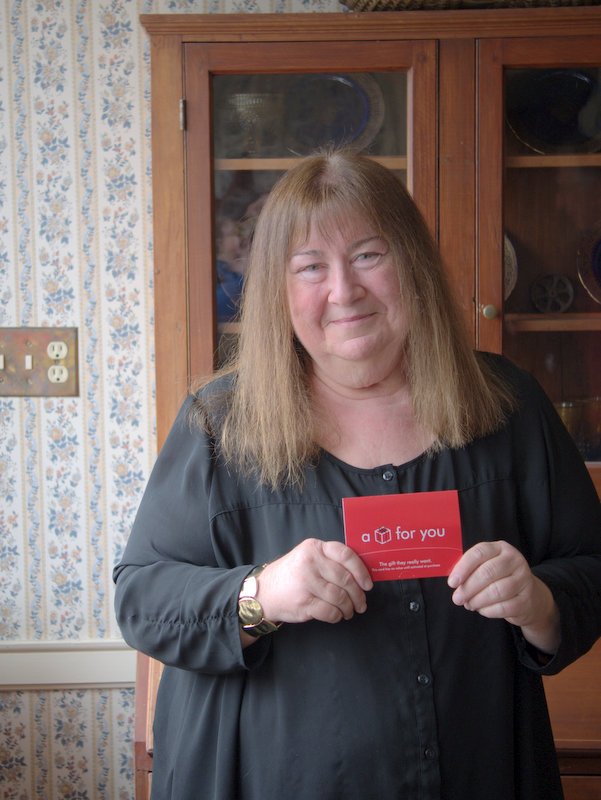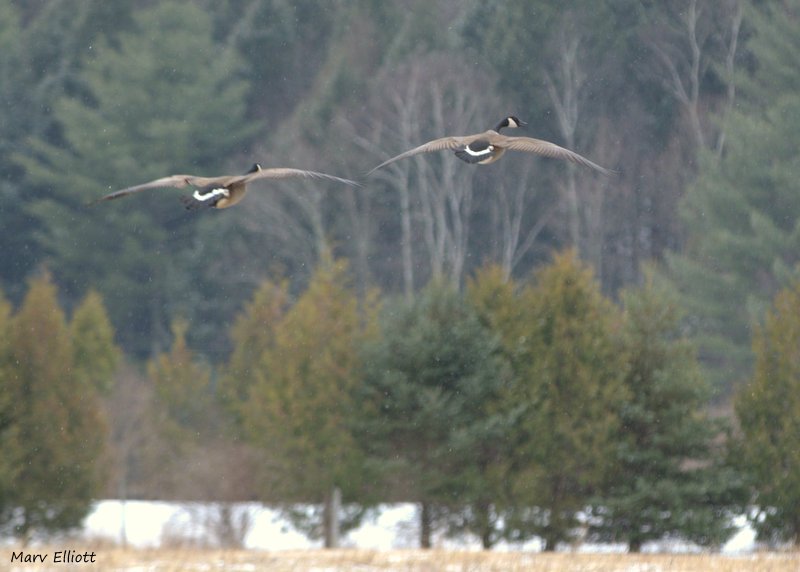
Rutland County Audubon celebrated another successful year on July 6 with a delicious potluck supper, presentation of the annual report and election of next year's board members. Prior to the annual report and election, participants shared their favorite bird and nature stories from the past year.
After reading through the annual, we can be proud of last year's accomplishments. Looking forward we hope to do more. As always there is an endless need for volunteers. If you have time to spare for us, let us know! We can be reached at birding@rutlandcountyaudubon.org
Thank you to Roy Pilcher for preparing this excellent report!
2015-2016 Annual Report of the Rutland County Audubon Society:
CONSERVATION/ENVIRONMENTAL ACTION
RCAS members participated in the annual Vermont Green-Up Day at West Rutland Marsh on Saturday, May 7. This was the 24th year RCAS has participated in Green Up Day.
As of June 20, 2016 RCAS has undertaken 179 consecutive monthly bird monitoring walks each 3.7 miles, around West Rutland Marsh, a Vermont-designated Important Bird Area (IBA). A total of 149 bird species has been tallied by 2,037 participants. Pine Warbler was the onlynew species added during this past fiscal year, raising the the total species count to 149. All data is recorded on eBird.
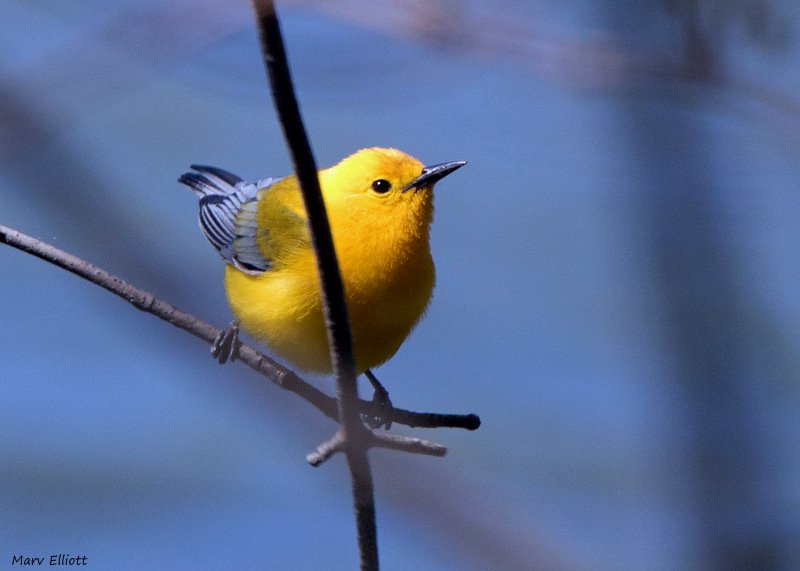 a Prothonotary Warber in West Haven was a birding highlight this yearBird monitoring of the Mountain Top Farm Conservation Easement was continued under the spring/summer/fall protocol, initiated on June 14, 2012 by Steve Hagenbuch, Audubon Vermont's Forest Bird Initiative biologist. As of May 2016, 63 bird species have been recorded. All data is recorded on eBird.
a Prothonotary Warber in West Haven was a birding highlight this yearBird monitoring of the Mountain Top Farm Conservation Easement was continued under the spring/summer/fall protocol, initiated on June 14, 2012 by Steve Hagenbuch, Audubon Vermont's Forest Bird Initiative biologist. As of May 2016, 63 bird species have been recorded. All data is recorded on eBird.
A proposal to erect a bird blind and feeding station at Ayer's Meadow in the Mountain Top conservation easement was withdrawn. We at RCAS were having difficulty fitting it in since the conditions of the easement prohibit structures.
A proposal to erect a viewing platform at the Brandon Swamp wetland off Route 73 on the Brandon/Sudbury line was exhaustively investigated on several levels, but finally abandoned due to safety and environmental concerns. Thanks to Nate Dansereau for his investigative work. Any future proposals of that type should start with local community support.
RCAS members participated for a fifth year in monitoring designated Audubon Vermont/VELCO power line rights-of-way for seven brush/grassland bird species in particular Golden-winged/Blue-winged Warbler.
RCAS members covered the lakes in Rutland County as part of the annual Mid-Winter Bald Eagle Survey.
RCAS provided financial support to the Vermont Bobolink Project and to the Vermont Center for Ecostudies that manages the VT eBird portal.
EDUCATION AND OUTREACH
Marsh Day saw 27 fifth grade pupils from Poultney Elementary School participate in a four-activity event at the West Rutland Marsh presented by members of RCAS. The four activities included Life under the Water, using shallow pans and microscopes; Bird Walk to acquaint participants with the birds of the marsh as well as how to use binoculars; Wetlands, a brief look at three types of wetlands and their beneficial functions; and Wetland Plants.
RCAS voted to provide financial support in the amount of $400 for the Leicester Central School’s Hawk Hill Field Study which involved students pre-k through 6th grade. Activities included twice a week hikes at Hawk Hill to learn about its wetlands with the support and interaction from Otter Valley Unified Union High School students who were involved in the Moosalamoo Program. Support for the program was made in conjunction with Otter Creek Audubon.
 the Century Count was one of the year's highlightsRCAS maintained the kiosk and immediate area at the entrance of the West Rutland Marsh where marsh-related information is posted. A new Watchable Wildlife sign was erected in West Rutland to direct visitors to the marsh.
the Century Count was one of the year's highlightsRCAS maintained the kiosk and immediate area at the entrance of the West Rutland Marsh where marsh-related information is posted. A new Watchable Wildlife sign was erected in West Rutland to direct visitors to the marsh.
On May 13, 2016 RCAS participated in the Buckner Memorial Preserve bioblitz involving Castleton Middle School students and Fair Haven High School students. It was organized and supplied by Castleton University professors and students.
Marsha Booker and Roy Pilcher, at the invitation of the Pittsford Preschool, presented programs that were well received by these young schoolers who were themselves receptive, enthusiastic and well-prepared.
Updated and posted the bird lists for the West Rutland Marsh, Pomainville WMA and Gifford Woods State Park. An additional list was provided to Aitken State Forest.
On October 13, 2015 Alyssa Bennett, bat spokesperson for Vermont Fish and Wildlife presented an excellent program on bats at the Rutland Free Library.
On January 26, 2016 Gary Starr presented his program on The Birds of Madagascar at the Rutland Free Library. Beside the birds the exposure to the landscape of Madagascar was particularly interesting.
On February 23, 2016 Hank Kastner, a world-wide birding enthusiast, presented his program, Birding in Kazakhstan at the Rutland Free Library. He also included pictures on a birding trip he took to Yemen. For those of us in the audience who will never visit these countries it was a most enlightening program.
On March 16, 2016 Lee Allen presented his program on a Peruvian Cruise on the Amazo” at the Rutland Free Library.
Thanks to Renee Warren, program director and board member, for organizing and planning all the above programs.
Recreated a display for the Vermont State Fair’s Forestry Pavilion in Rutland, based on Audubon Vermont’s Forest Bird Initiative that encourages forest managers to accommodate various nesting bird preferences. Thanks to Marsha Booker and Kathleen Guinness for their contribution. RCAS members also helped staff the Forestry Building during the fair.
Following some minor modifications, a set of 500 Bridge to Bridge brochures for West Rutland Marsh were reprinted. Thanks to Mike Blust who spear-headed the project. Bridge-to-Bridge brochures were placed at the West Rutland town hall and West Rutland library. Partial funding was provided by an Audubon Vermont grant.
Audubon Adventures is now accessible digitally on line except for the newspaper. Schools that participated did so independently of RCAS. Thanks to Marsha Booker who coordinated this program over the years.
Submitted the West Rutland Marsh annual report to the Town of West Rutland to be incorporated into their annual Town Report.
A Super Senior segment featuring Roy Pilcher aired on WCAX and included a discussion of and scenes depicting the West Rutland marsh. A letter of appreciation was sent by the Town Manager and Select Board of West Rutland.
ADVOCACY
RCAS continues to support the work of the locally based USDA/NRCS office in the expansion of the Wetlands Reserve Program particularly in Rutland County along the Otter Creek. On June 24, 2016 RCAS participated in a celebration of the DeMarais Wetland Easement in Brandon, the largest wetland easement in the state, as well as other conserved lands along Otter Creek in Rutland County
RCAS holds the conservation easement on 15.36 acres of wetland now owned by BAI, LLC and a right-of -way access to the wetland. The adjacent property of 19.58 acres and the one traversed by the RCAS right of way is owned by Mid-Vermont Properties. The proposed development on the approximate eight acres of upland within the 19.8 acres goes by the name, Rutland Commons. RCAS and MVP were joint applicants in the prolonged, but eventually successful Act 250 permitting process for the initial Rutland Commons project. With no immediate clients the Rutland Commons project languished until 2014 when Saxon Partners, LLC indicated an interest and began the process in and through the local District Environmental Commission to acquire the necessary permitting. The opposition by BAI, LLC to the proposed Saxon Partners development continues at this time in the Vermont Superior Court, Environmental Division. RCAS remains an interested party awaiting a definitive ruling by the Court scheduled for September 2016. Throughout this prolonged process, RCAS has relied on the expertise of RCAS member Valerie Biebuyck, ably assisted by Marv Elliott to both of whom we owe a great debt of gratitude. RCAS has engaged the services of James A. Dumont, Esq. in case future legal representation becomes necessary. The defense of this significant wetland and the aquifer beneath it could become a project that lasts for many years in the future.
ORGANIZATION
Monthly RCAS Board meetings, scheduled for the third Thursday of each month, were held throughout the year except December (due to the Christmas Bird Count).
Liability Insurance was again purchased through R V Nuccio, Insurance Brokers that covers board members and volunteers involving participants and/or property damage at events.
A Member Appreciation gathering and potluck was held on April 6, 2016 at the Proctor Free Library to recognize the contributions of Valerie Biebuyck for her efforts in supporting the RCAS cause of protecting the wetlands surrounding the former Rutland Commons project site.
RCAS was the host chapter this year for Vermont’s fall and spring Chapter Assemblies on Saturday, November 14 and Saturday, April 2 respectively.
Current RCAS membership stands at approximately 240 National Members.
We continue the updating and development of our website inviting browsers to learn of programs, events and Birding Hot Spots.” Thanks to Webmaster David Jenne and Sue Elliott. Email alerts of new website articles and upcoming events are sent regularly by Tim Abraham.
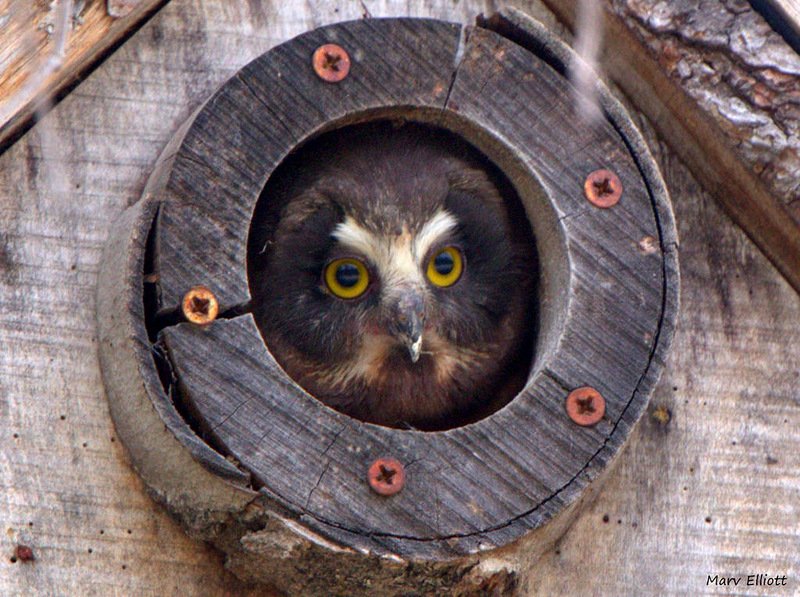 a Northern Saw-whet Owl thrilled birders at the marshThe RCAS Flickr page exhibiting a wide array of bird, butterfly and dragonfly images found in Rutland County remains both well supplied with images and widely popular. We are also increasing our social media following through Facebook.
a Northern Saw-whet Owl thrilled birders at the marshThe RCAS Flickr page exhibiting a wide array of bird, butterfly and dragonfly images found in Rutland County remains both well supplied with images and widely popular. We are also increasing our social media following through Facebook.
Thanks to Kathleen Guinness for secretarial minutes that make this Annual Report possible. In addition Kathleen has worked hard to organize many of our potluck suppers and meetings including the Christmas Bird Count.
ACTIVITIES
The annual Mount Philo Broad-winged Hawk Migration field trip took place on September 15. Unfavorable weather conditions dictated the outcome with few hawks flying.
RCAS undertook two successful Bird Seed Sales and Membership Recruitment drives, one at Garland’s Farm and Garden in Rutland and the other at Brandon’s Blue Seal on November 7. A sum of $846 was raised in addition to the recruitment of ten new National Audubon members and one Friend membership.
The forty-second Annual Christmas Bird Count and Pot Luck Supper was held on January 2, 2016. Thirty-two Field Observers and eight Feeder Watchers tallied 53 species on count day and a further two species during count week representing 8,452 individual birds. This number is closely aligned to the ten-year running average of 8,480 birds. All Christmas Bird Count data is entered on eBird.
The annual Champlain Valley birding field trip, Winter Regulars and Raritie” was held on Saturday, January 21. A record 16 participants turned out in spite of a particularly inhospitable and blustery day, but they were rewarded with the sighting of 11 Bald Eagles and a large flock of Snow Buntings that included a few Horned Larks. Thanks to Roy Pilcher for leading the trip.
The Century County Count XXI attracted 12 participants who recorded exactly 100 species during almost13 hours of birding in Rutland County on Saturday, May 28, 2016. Twenty-five checklists were submitted to eBird thanks to Sue Elliott. Conflict with Memorial Day celebrations has prompted suggestions for some new initiatives!
 The fall foliage is still brilliant on the hillsides, but the crystal coating on the cattails and other marsh vegetation this morning was a reminder of what is to come. Eighteen participants, sporting wool caps and warm gloves for the first time this season, joined together for our monthly monitoring of West Rutland Marsh.
The fall foliage is still brilliant on the hillsides, but the crystal coating on the cattails and other marsh vegetation this morning was a reminder of what is to come. Eighteen participants, sporting wool caps and warm gloves for the first time this season, joined together for our monthly monitoring of West Rutland Marsh. Several ruby-crowned kinglets were flitting in the trees and goldenrod seedheads along with a few golden-crowned kinglets. Their contrasting call notes were quite obvious.
Several ruby-crowned kinglets were flitting in the trees and goldenrod seedheads along with a few golden-crowned kinglets. Their contrasting call notes were quite obvious.
